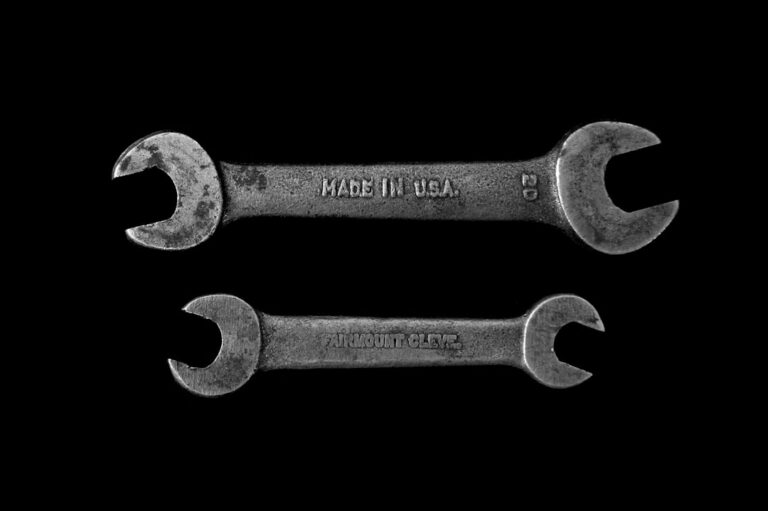Mastering Tangle-Free Cable Wrapping

Tangle-free cable wrapping is a crucial skill for individuals who frequently handle electronic devices and cables. This technique offers numerous benefits, including time savings, reduced frustration, and potential cost reductions in the long term. Properly wrapped cables maintain a neat and professional appearance while also preventing damage and wear that can occur when cables become tangled.
When cables are tangled, they are more susceptible to kinks, twists, and bends that may compromise their functionality and lifespan. These issues can lead to signal interference, decreased performance, and the need for early cable replacement. Furthermore, tangled cables are more challenging to store and transport, resulting in a disorganized workspace.
Mastering tangle-free cable wrapping techniques ensures that cables remain in optimal condition, are easily accessible when needed, and contribute to a tidy and efficient work environment. This skill also enhances functionality and efficiency by allowing for quick identification and access to specific cables, saving time and effort in various situations such as setting up presentations, troubleshooting technical issues, or connecting devices to power sources. Additionally, proper cable management contributes to workplace safety by reducing tripping hazards and minimizing the risk of accidents and injuries.
By maintaining neatly wrapped and organized cables, individuals can create a safer environment for themselves and others. In summary, tangle-free cable wrapping is an essential skill that benefits anyone who regularly works with electronic devices and cables, improving organization, efficiency, and safety in both professional and personal settings.
Key Takeaways
- Tangle-free cable wrapping is important to prevent damage and ensure longevity of cables
- Choosing the right cable wrapping technique can make a significant difference in preventing tangles
- Tips for preventing cable tangles include using Velcro ties, cable organizers, and proper storage
- Tools and accessories such as cable sleeves, cable clips, and cable ties can help in tangle-free cable management
- Organizing cables in a way that allows for easy access and storage can save time and frustration
- Common mistakes to avoid when wrapping cables include over-tightening, using incorrect wrapping techniques, and neglecting proper storage
- Mastering tangle-free cable wrapping can lead to benefits such as reduced maintenance, improved organization, and increased cable lifespan
Choosing the Right Cable Wrapping Technique
The Over-Under Technique
One of the most popular methods for keeping cables neat and organized is the over-under technique. This involves alternating the direction in which the cable is wrapped to prevent twisting and tangling. To use this technique, start by holding the end of the cable in one hand and using the other hand to create a loop in the cable. Then, twist the loop in one direction to create a figure-eight shape, and continue wrapping the cable in this manner until you reach the end. This technique helps to distribute any natural twists or kinks in the cable evenly, preventing them from becoming tangled or knotted during storage or transport.
The Velcro Wrap Method
Another effective cable wrapping technique is the Velcro wrap method, which involves using Velcro straps or ties to secure the cable in a neat and compact bundle. This method is particularly useful for longer cables or cables that need to be stored or transported over longer distances. To use this technique, simply gather the cable into a bundle and secure it with a Velcro strap or tie at regular intervals along its length. This helps to keep the cable neatly organized and prevents it from becoming tangled or unruly.
Benefits of Velcro Wraps
Velcro wraps are reusable and adjustable, making them a versatile and convenient option for tangle-free cable management. They can be easily adjusted to accommodate cables of different lengths and can be reused multiple times, making them a cost-effective solution for cable organization.
Tips for Preventing Cable Tangles

In addition to using the right cable wrapping techniques, there are several tips and tricks that can help prevent cable tangles and keep your workspace neat and organized. One important tip is to avoid overloading power strips or outlets with too many devices or cables. Overcrowded power sources can lead to tangled and twisted cables as they compete for space and positioning.
Instead, use power strips with built-in cable management features or invest in cable organizers to keep your power sources tidy and efficient. Another helpful tip is to label your cables for easy identification. By using color-coded labels or tags, you can quickly identify which cable is which without having to unravel or untangle them.
This can save you time and frustration when setting up or troubleshooting electronic devices. Additionally, using cable clips or organizers to secure cables along walls or under desks can help prevent them from becoming tangled or creating tripping hazards.
Tools and Accessories for Tangle-Free Cable Management
| Product | Description | Material | Size |
|---|---|---|---|
| Cable Clips | Adhesive clips for organizing cables | Plastic | Various sizes |
| Cable Ties | Reusable ties for bundling cables | Nylon | Various lengths |
| Cable Organizer Box | Box for hiding and organizing power strips and cables | ABS plastic | Large |
| Cable Management Sleeve | Fabric sleeve for concealing and organizing cables | Polyester | Flexible, adjustable |
There are several tools and accessories available that can make tangle-free cable management easier and more efficient. Cable ties or zip ties are versatile tools that can be used to secure cables into neat bundles, preventing them from becoming tangled or unruly. These ties come in various lengths and materials, making them suitable for a wide range of cable management needs.
Cable sleeves or wraps are another useful accessory for tangle-free cable management. These flexible sleeves can be used to encase multiple cables in a single bundle, keeping them organized and preventing tangling during storage or transport. Additionally, cable management trays or boxes can help keep cables neatly organized and out of the way, reducing clutter and tripping hazards in the workspace.
Organizing Cables for Easy Access and Storage
In addition to preventing tangles, organizing cables for easy access and storage is an important aspect of tangle-free cable management. One effective method for organizing cables is to use cable management racks or hooks to keep them off the floor and out of the way. These racks can be mounted on walls or under desks, providing a convenient and accessible storage solution for cables of all types.
Another useful tool for organizing cables is a cable organizer box or case. These boxes are designed to hold multiple cables in separate compartments, keeping them neatly organized and easy to access when needed. Some organizer boxes also feature built-in cable management features such as Velcro straps or clips, making them a versatile solution for tangle-free cable storage.
Common Mistakes to Avoid When Wrapping Cables

Avoiding Excessive Tension
One common mistake is wrapping cables too tightly, which can put unnecessary strain on the cable and lead to kinks or damage over time. It’s essential to find the right balance and wrap cables with just enough tension to keep them neat and organized without putting undue stress on the cable itself.
Securing Wrapped Cables
Another common mistake is neglecting to properly secure wrapped cables, leading to them unraveling or becoming tangled during storage or transport. Using Velcro straps, zip ties, or cable clips to secure wrapped cables can help prevent this issue and ensure that they remain neat and organized until they are needed.
Best Practices for Cable Management
By being mindful of these common mistakes, you can ensure that your cables remain organized, untangled, and damage-free. Remember to wrap cables with care, secure them properly, and store them in a way that prevents tangling or kinking.
The Benefits of Mastering Tangle-Free Cable Wrapping
Mastering tangle-free cable wrapping offers numerous benefits for anyone who works with electronic devices and cables on a regular basis. Not only does it contribute to a neat and professional workspace, but it also helps prevent damage and wear on cables, saving time and money in the long run. Additionally, tangle-free cable wrapping makes it easier to identify and access specific cables when needed, contributing to a more efficient and streamlined work environment.
By using the right wrapping techniques, tools, and accessories, as well as following best practices for preventing tangles, you can master tangle-free cable wrapping and enjoy these benefits in your daily work with electronic devices and cables.
If you’re interested in learning more life hacks, you should check out this article on how to be the world’s smartest traveller. It’s full of tips and tricks for making your travel experiences more efficient and enjoyable. And if you’re into e-commerce, you might want to take a look at this ecom checklist for some helpful advice on running a successful online business.
FAQs
What are the benefits of wrapping cables without tangles?
Wrapping cables without tangles helps to prolong the life of the cables by preventing damage and wear. It also saves time and frustration when setting up and using the cables.
What is the best method for wrapping cables without tangles?
The over-under method is widely considered the best way to wrap cables without tangles. This method involves alternating the direction of each loop to prevent kinks and tangles.
How do you use the over-under method to wrap cables?
To use the over-under method, start by creating a small loop at one end of the cable. Then, make a second loop in the opposite direction, and continue alternating the direction of the loops as you wrap the cable.
Are there any tools or accessories that can help with wrapping cables without tangles?
Cable organizers, Velcro straps, and cable ties are all useful tools for keeping cables neat and tangle-free. These accessories can help to secure the wrapped cables and prevent them from coming undone.
What are some common mistakes to avoid when wrapping cables?
Some common mistakes to avoid when wrapping cables include wrapping them too tightly, leaving them loose and unsecured, and using improper wrapping techniques that can lead to tangles and kinks.






